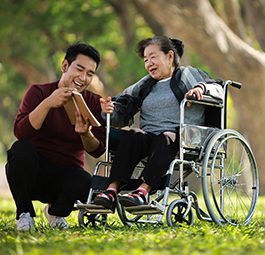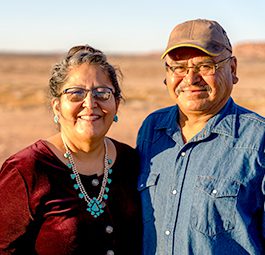News
2022 Allergy Capitals Report Highlights Most Challenging Cities for Fall Allergies
The #1 Allergy Capital, Scranton, Pennsylvania, also ranks as the #1 most challenging city in the U.S. for fall pollen allergies
Washington D.C., September 28, 2022 — For the second year in a row, Scranton, Pennsylvania, is the most challenging city in the United States to live with pollen allergies. The 2022 Allergy Capitals™ report from the Asthma and Allergy Foundation of America (AAFA) identifies the most challenging cities for spring and fall allergies in the top 100 metropolitan areas in the continental United States. Cities are ranked based on spring and fall pollen scores, over-the-counter medicine use, and availability of board-certified allergists/immunologists.
Scranton takes the top spot based on its high spring and fall pollen scores and lower-than-average number of allergy/immunology specialists per patient. AAFA’s report lists overall annual rankings and a seasonal comparison for spring and fall.
The top 10 Allergy Capitals™ for 2022 overall:
- Scranton, PA
- Wichita, KS
- McAllen, TX
- Richmond, VA
- San Antonio, TX
- Oklahoma City, OK
- Hartford, CT
- Buffalo, NY
- New Haven, CT
- Albany, NY
The top 10 2022 Allergy Capitals™ for fall:
1. Scranton, PA
2. Wichita, KS
3. McAllen, TX
4. San Antonio, TX
5. Oklahoma City, OK 6. El Paso, TX
7. Buffalo, NY
8. Hartford, CT
9. New Haven, CT 10. Richmond, VA
See the full 100-city ranking, including seasonal comparisons for spring and fall, at allergycapitals.com.
While there is much overlap between the overall and fall rankings, some cities may be more impacted by ragweed pollen this time of year. Ragweed is one of the main culprits for fall pollen allergies, and around 75% of people with pollen allergies are allergic to ragweed. Ragweed can be found in almost every state, but is particularly prominent in the Eastern and Midwestern states. It is often found along roadsides, riverbanks, in vacant lots and fields. And while ragweed is prevalent in rural areas, you can still be affected by ragweed pollen grains even if you live in a city. One plant can produce up to 1 billion pollen grains, and these grains can travel as far as 400 miles out to sea and 2 miles up in the air.
AAFA began identifying annual Allergy Capitals™ in 2003. Since that first report, pollen allergies have worsened. Climate change has caused the growing seasons to get longer and warmer, leading to higher pollen counts in both spring and fall. Pollen allergy causes seasonal allergic rhinitis.
The impacts of climate change are evident when looking at ragweed. Ragweed can start pollinating as early as July in some states, especially in the South. But for most of the country, it typically appears in August and peaks in mid-September. In some areas, it can stick around as late as November (until first frost). But warmer fall temperatures caused by climate change have resulted in longer and stronger fall pollen seasons. There’s evidence that suggests from 1995-2015, ragweed seasons have increased by as much as 25 days in some areas of the United States.
“Warmer temperatures and carbon dioxide from air pollution stimulate plants to produce more pollen,” says Kenneth Mendez, CEO and president of AAFA. “This means allergy symptoms will continue to worsen for the more than 24 million people in the U.S. with seasonal allergic rhinitis until we aggressively slow down climate change.”
Allergies can also trigger asthma episodes or attacks. Around 60-80% of the 25 million people in the U.S. with asthma have allergic asthma. “We see spikes in emergency room visits that coincide with spikes in pollen seasons,” continues Mendez. “Around 4,100 people per year die from asthma, so it is important to address and manage asthma and allergy triggers where you live.”
“Early fall is a particularly challenging time for people with asthma and allergies. The peak of ragweed season often coincides with the start of flu and cold season and the wildfire season in the west,” says Melanie Carver, chief mission officer of AAFA. “This in combination with the ongoing COVID-19 pandemic can make it difficult to determine if the symptoms someone is experiencing are allergies, asthma, a cold, the flu, or COVID-19.”
AAFA provides a symptom chart to help people identify the similarities and differences between respiratory infections and allergies and asthma: Is it COVID-19, Allergies, Asthma, the Flu, or a Cold? (PDF)
For people with pollen allergies, there are over the counter and prescription medicine options available to prevent or treat fall allergy symptoms. There are also steps you can take to reduce your contact with pollen. For tips on how to manage your pollen allergies, go to aafa.org/pollen- allergy.
Press Contact:
Melanie Carver
Asthma and Allergy Foundation of America (AAFA)
gro.afaa@aidem
About the Research
The Allergy CapitalsTM ranking is an annual research and educational project of AAFA, designed to help patients recognize, prevent and safely treat allergy symptoms. Through this ranking, AAFA raises awareness about the impact of seasonal allergies and provides helpful information designed to improve the quality of life for people who experience them. The ranking is based on local spring and fall pollen levels, use of allergy medication and the number of board-certified allergists/immunologists in each metro area. Visit allergycapitals.com to see the full list, study methodology and learn more about allergy diagnosis, prevention and treatment.
About AAFA
Founded in 1953, AAFA is the oldest and largest non-profit patient organization dedicated to saving lives and reducing the burden of disease for people with asthma, allergies and related conditions through research, education, advocacy and support. AAFA offers extensive support for individuals and families affected by asthma and allergic diseases, such as food allergies and atopic dermatitis (eczema). Through its online patient support communities, network of local chapters and affiliated support groups, AAFA empowers patients and their families by providing practical, evidence-based information and community programs and services. AAFA is the only asthma and allergy patient advocacy group that is certified to meet the standards of excellence set by the National Health Council. For more information, visit: www.aafa.org








